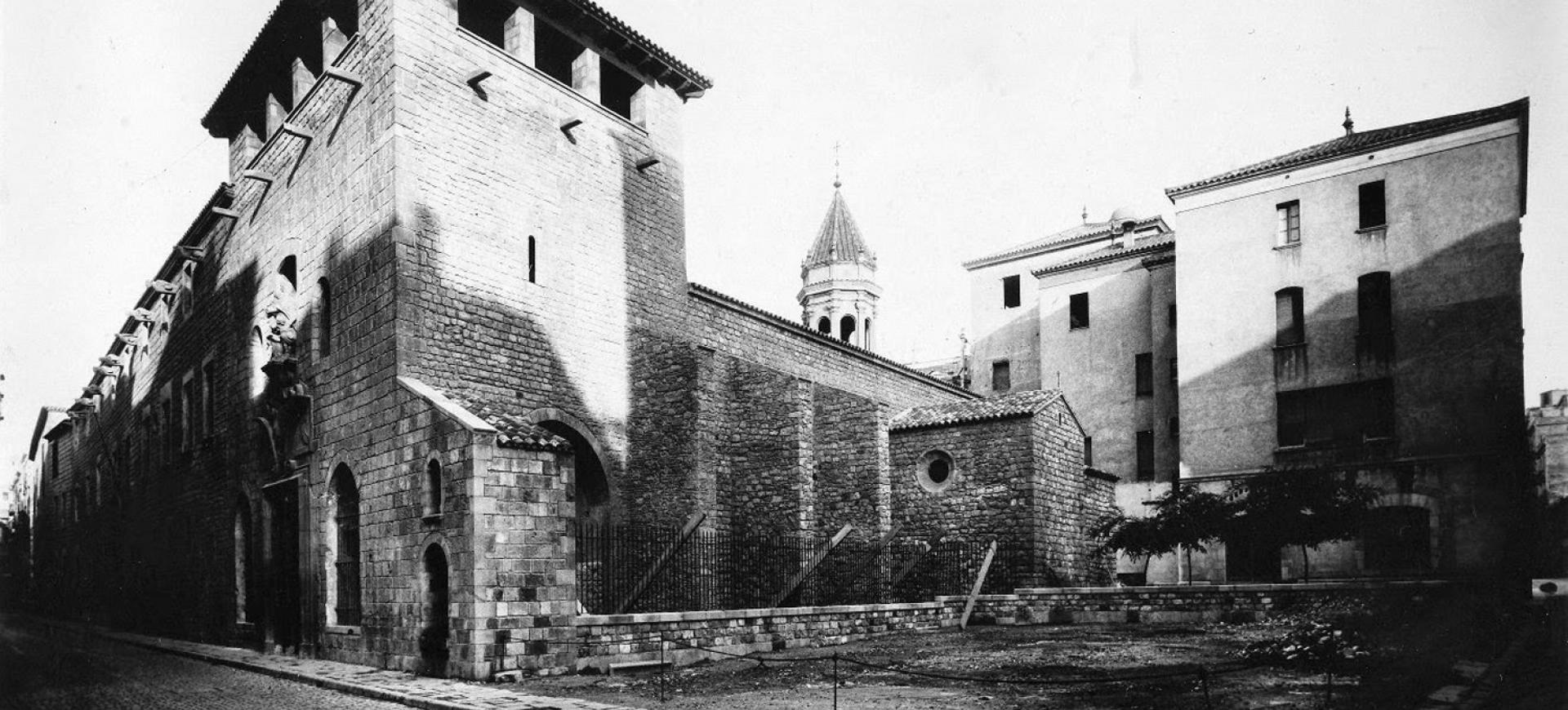The Chapel of the former Hospital is housed in the monumental-style installations of the Hospital de la Santa Creu and la Casa de la Convalescència, and is a building catalogued as a Historic Monument of National Interest.
A papal bull from Pope Benedict XII made construction of the Santa Creu hospital complex possible, and work began in 1401. This founding bull ratified the agreement reached by the City's Consell de Cent (Council of One Hundred), the Bishopric and the Cathedral Chapter to bring together in one sole institution all of the hospital services existing in the city at the time. The Santa Creu Hospital was created in a context in which Barcelona was immersed in a period of economic boom and the new institution was born under a modern concept of centralized management.
Historical evidence of the church exists thanks to a concord signed in 1402 between the rector of the church of Santa Maria del Pi, Guillem Carbonell, the hospital administrators and the Consell de Trenta (Council of Thirty), as a result of which the Bishop of Barcelona authorized the hospital administrators to build a church with a number of chapels and altars. The Chapel was completed in 1444, built in the south-west part of the complex on the site of a previous structure belonging to the former Colom hospital. The Chapel was heavily reconditioned in the 18th century, with the addition of a new vault perforated by a lantern, and the opening of a Baroque portal decorated with an allegorical image of Charity, the work of Pere Costa (1730).
Later, between the nineteen-thirties and nineteen-sixties, a variety of restoration projects carried out on the hospital architectural complex led to recuperation of the Chapel's Romanesque tunnel vault, belonging to the 13th century construction, as well as a number of 15th and 16th century arches.
The Chapel is located in the Raval district of Barcelona in the city's historic centre. This is one of Barcelona's liveliest neighbourhoods, undergoing constant change and highly popular with tourists. By the late 19th century, the hospital had exceeded its capacity as a result of the city's growth and was therefore moved to the new headquarters of Hospital de Sant Pau (which Lluís Domènech i Montaner was commissioned to build between 1902 and 1930).
In 1926, Barcelona City Council purchased the old building and began its reconstruction. La Capella was dedicated to cultural activities and, in 1968, a major retrospective exhibition of Joan Miró's work was held. Since 1994, it has been devoted to displaying the works of the city's up-and-coming artists.
Photography: Arxiu Fotogràfic de Barcelona. Unknown author.



